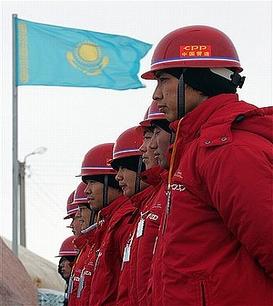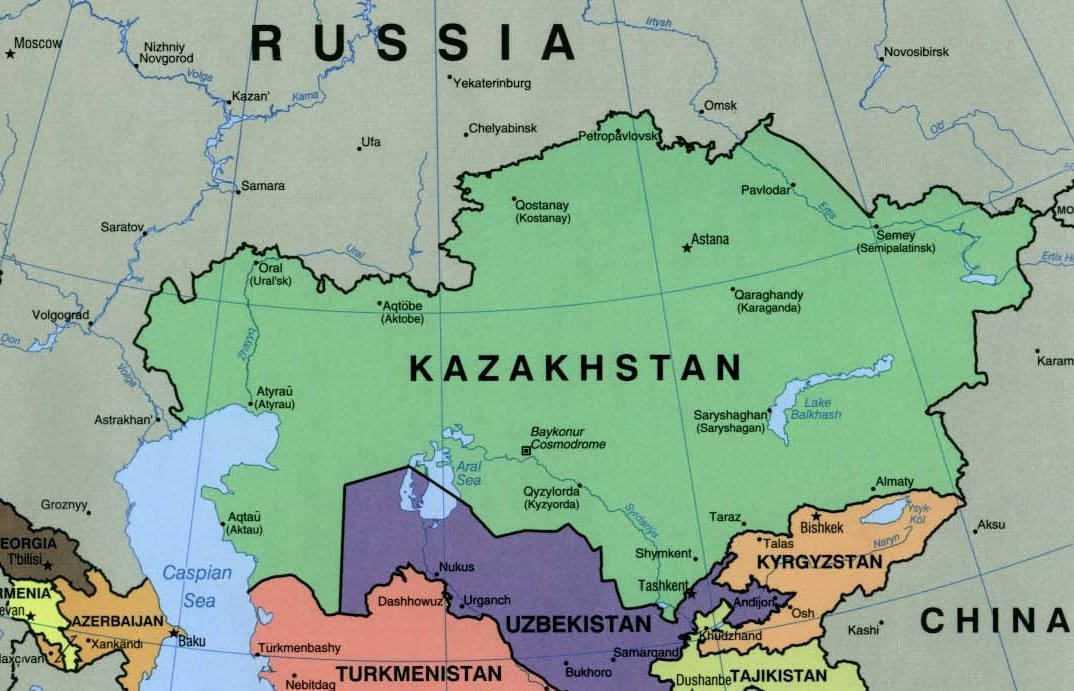Several unexpected trends were reported by international migrations specialist Elena Sadovskaya, who is based at the Moscow Institute for Economic Forecasting, regarding immigration patterns between China and neighboring Kazakhstan. Among those findings were that many less Chinese are working in Kazakhstan than commonly thought, and that many of those migrants counted as Chinese are in fact other ethnicities.
“Chinese migration to Kazakhstan is not especially ‘Chinese,’” Sadovskaya stated. “[It includes] not only ethnic Chinese [Hans] but also Kazakhs, Uyghurs, Dungans, Uzbeks, Koreans and even [ethnic] Russians.”
Sadovskaya’s analysis was reported in the current issue of Karavan, a Kazakhstan weekly.
 Different ethnic groups dominate different parts of the migratory flows in and out of Kazakhstan, Sadovskaya reported.
Different ethnic groups dominate different parts of the migratory flows in and out of Kazakhstan, Sadovskaya reported.
Most immigrants to Kazakhstan that are counted as Chinese are actually non-Han ethnic groups from the restless Chinese-controlled land of Xinjiang, and include ethnic Kazakhs.
Most migrants coming to Kazakhstan for work, however, are Han Chinese. Around 6,000 to 7,000 Han relocate to Kazakhstan per year for work, and form about one quarter of Kazakhstan’s guest workers. This finding has been remarked as surprising because of a widespread belief that Han workers in Kazakhstan are a much larger group.
Although most job-seekers coming to Kazakhstan are Han, those coming for business include Hans, Dungans, Uyghurs and Kazakhs, and those seeking permanent resident are primarily ethnic Kazakhs, known as “Oralmany,” who are returning to their homeland from a period of residence in China.
Sadovskaya pointed out that a large number of these returning Oralmans have not become Kazakhstan citizens–only about half of those who return from China have done so. The reasons for this range, Sadovskaya said, from partiality to Oralmany government benefits to language barriers.
 Within Kazakhstan, recent polls have shown that locals are increasingly hostile towards Chinese immigrants. Those expressing some hostility toward Chinese immigrants rose from 18 percent in 2007 to 33 percent in 2012.
Within Kazakhstan, recent polls have shown that locals are increasingly hostile towards Chinese immigrants. Those expressing some hostility toward Chinese immigrants rose from 18 percent in 2007 to 33 percent in 2012.
Immigrants to China from Kazakhstan, on the other hand, are largely students to are relocating to study at Chinese higher learning institutions. About 10,000 Kazakhstani students are studying in China in the current academic year–eight to 10 times the number of Chinese studying in Kazakhstan.
The two nations mirror each other’s deficits, Sadovskaya commented. Official corruption in Kazakhstan has led to a large number of illegal immigrants, while poor education in Kazakhstan has led to Kazakhs moving to China to study.
“It is possible to call Chinese migration a mirror image of the problems which exist in Kazakhstan,” said Sadovskaya.
By James Haleavy
